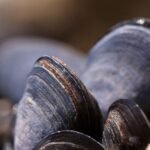
Carbon dioxide fills the air, and the surface is hot enough to melt lead. This makes Venus an uninhabitable place where life as we know it would not be able to thrive. As far as we know, no chemical process on Venus can make ammonia, which is a gas that was tentatively detected in the 1970s. It should not be possible to make ammonia this way. New research shows that if ammonia is present, it would start a chain of chemical reactions that would neutralize the sulfuric acid in the air around it and also explain most of the strange things we see in the clouds on Venus. As for where ammonia comes from, the authors say that the most likely source is biological, not something like lightning or volcanic eruptions.
Life might be making its own environment on Venus, they write in their study. It’s possible to test this new theory, and the researchers have given a list of chemical signatures for future missions to look for in Venus’ clouds to see if their idea is true or not. We know of no life that could live in the Venus droplets, says Sara Seager, a co-author of the study. She is a professor at MIT’s Earth, Atmospheric, and Planetary Sciences. There might be some life in the area. It might be modifying the environment so that people can live there.
“Life” on Venus
“Chance for life on Venus” was a popular phrase last year when scientists like Seager and her co-authors said that they had found phosphine in the clouds of Venus. Phosphine was found on Venus, which means that there could be a chance for life on the planet. Using these data, he found chemical signatures in the clouds that had gone unanswered for a long time, and he was able to figure out why. Oxygen and other nonspherical particles were also found. Other things that were out of the ordinary included high levels of water vapor and sulfur dioxide.
Rimmer said that dust could be to blame for the strange things. He said that minerals that have been swept up from the surface of Venus and into the clouds could mix with sulfuric acid to make some, but not all, of the strange things that have been seen. During the 1970s, the Venera 8 and Pioneer Venus space probes made a tentative discovery of the gas in the clouds of Venus. The presence of ammonia, or NH, was not known.
It shouldn’t be on Venus, says Seager. « Any gas that doesn’t fit in with its surroundings is automatically thought to be made by life. What did the researchers do to find out what was going on? They found that if life were making ammonia in the most efficient way possible, the chemical reactions that go along with it would naturally make oxygen as well.
Livable Conditions
Once ammonia was in the clouds, it would break down into sulfuric acid droplets, neutralizing the acid and making the droplets a little more habitable. The addition of ammonia to the droplets would change their round, liquid shape into more of a nonspherical, salt-like sludge. When ammonia was mixed with sulfuric acid, the reaction would make any sulfur dioxide that was nearby also dissolve. The presence of ammonia could, in fact, explain most of the big differences in the clouds on Venus, as it turns out.
The researchers also show that sources like lightning, volcanic eruptions, and even a meteorite strike can’t chemically make enough ammonia to explain the weird things that happen. However, life might. Seager says: “Venus has a lot of atmospheric anomalies that haven’t been explained.” Leaves a little space for the possibility of life.



